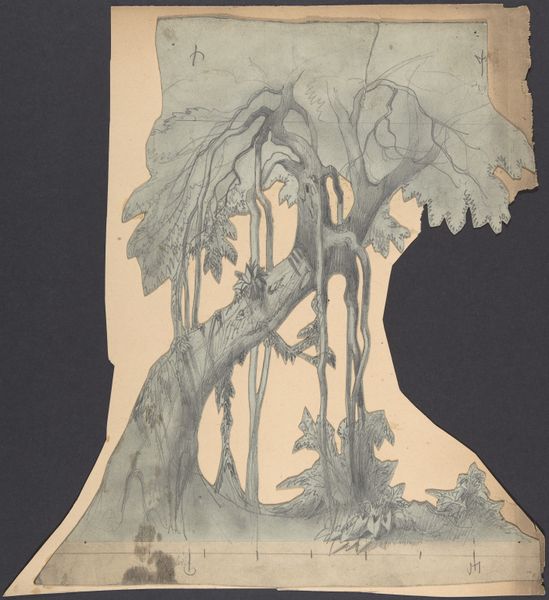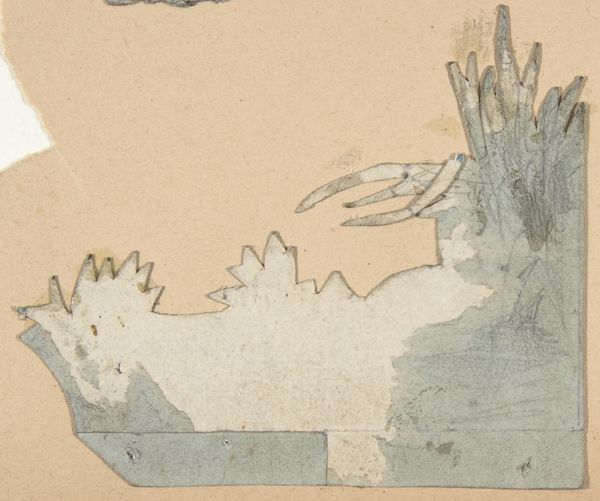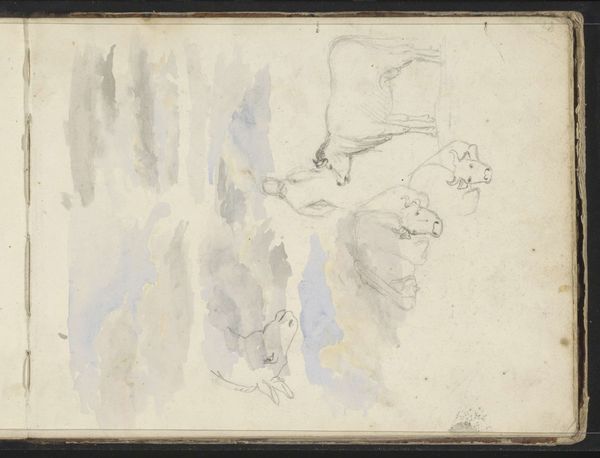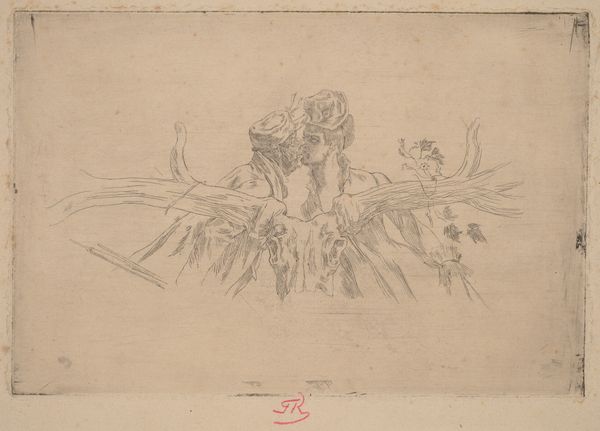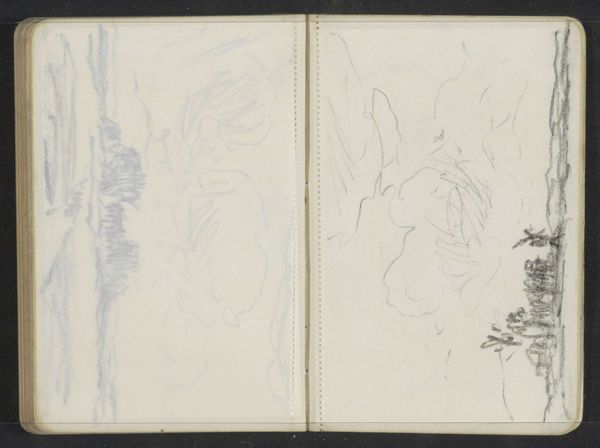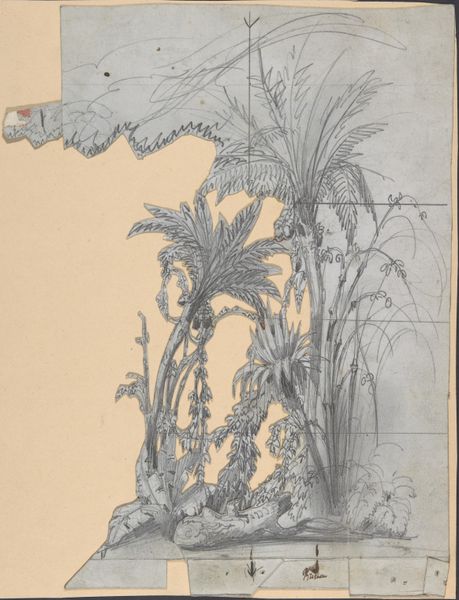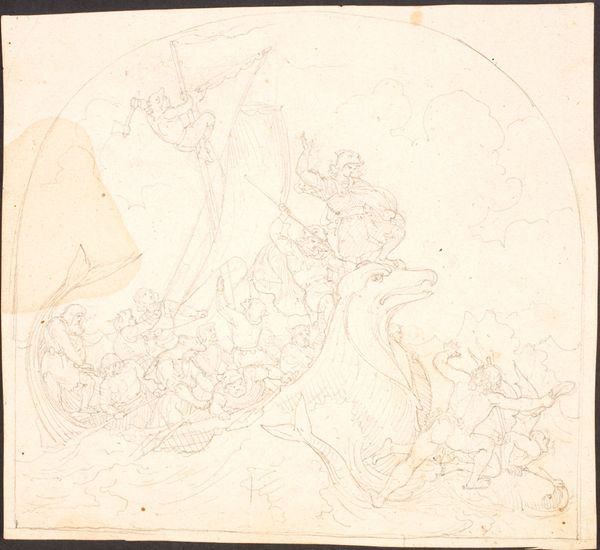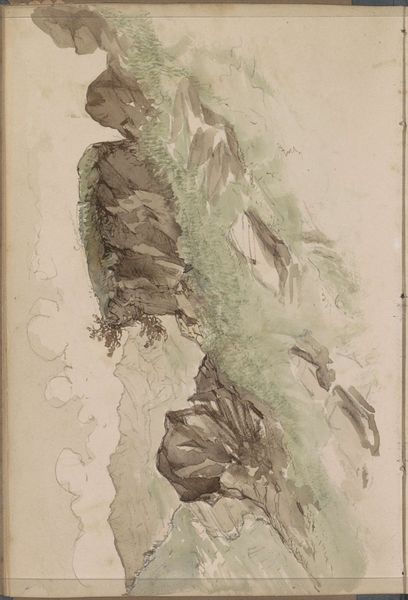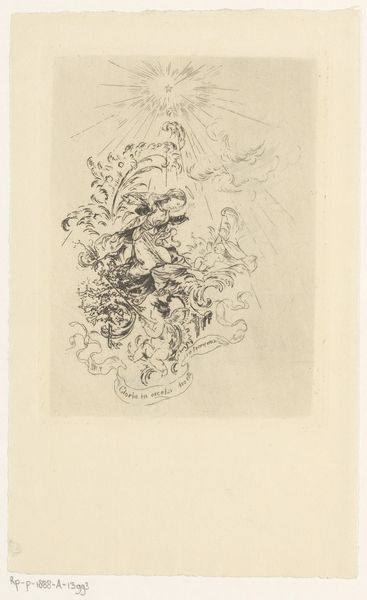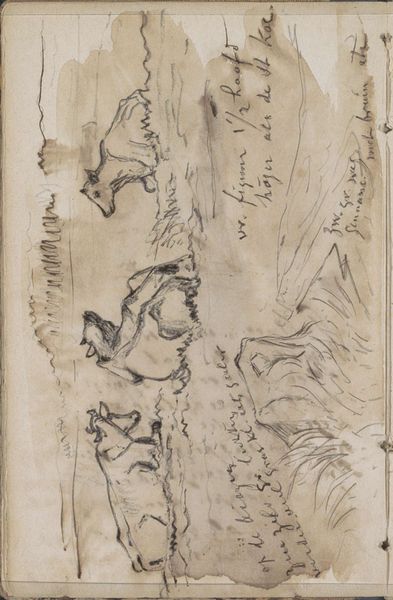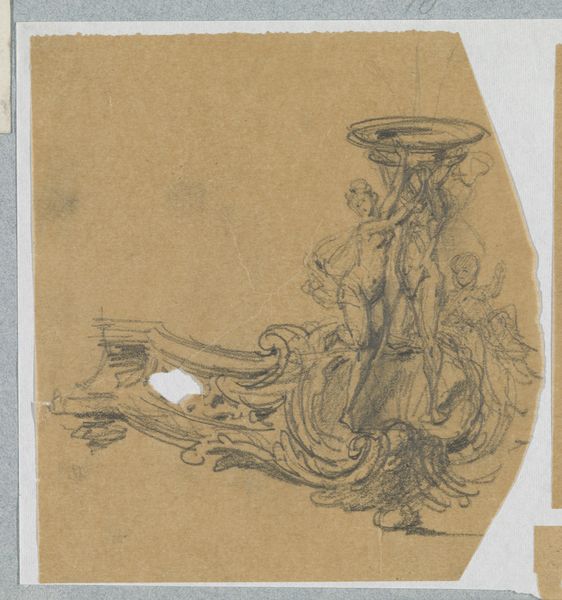
Design for a Stage Set at the Opéra, Paris 1828 - 1890
0:00
0:00
drawing, print
#
drawing
# print
#
landscape
#
history-painting
#
academic-art
Dimensions: Irregular sheet: 12 7/16 x 10 7/16 in. (31.6 x 26.5 cm)
Copyright: Public Domain
Editor: Here we have Eugène Cicéri's "Design for a Stage Set at the Opéra, Paris," created sometime between 1828 and 1890. It’s a drawing, or perhaps a print, of what seems like a tropical set piece. What strikes me is the sheer labor involved in creating these ephemeral illusions for the stage. What stands out to you? Curator: Well, consider the materiality here. It's not just ink on paper, but a plan, a tool in the vast production of opera. Look at the details, the meticulous rendering of the foliage. This speaks to a division of labor. Cicéri probably oversaw a workshop of artisans translating his design into a massive, three-dimensional reality. This design mediated between the patron, composer, and the hands-on labor that realized the set. Editor: So, you're saying the drawing itself isn't the final artwork, but more like a blueprint within a larger, collaborative process? Curator: Precisely! And let's not forget the social context. Opera was a form of mass entertainment for the elite. Designs like this fueled a whole industry—carpenters, painters, seamstresses, stagehands. The illusion of a tropical paradise obscures the reality of the workshop. Think about the wood, canvas, and paint that became "foliage." Where did these raw materials originate, and who labored to transform them? Editor: That's a great point. It's easy to get lost in the aesthetics, but there's a whole world of labor and material reality embedded in this seemingly simple drawing. Curator: Exactly! The ephemeral nature of the final stage set contrasts with the very tangible efforts poured into its production. It reminds us to question what we value as "art" and whose labor contributes to its making and the very infrastructure upon which elite artistry relies. Editor: That gives me a lot to think about. I’ll definitely look at stage design differently now. Curator: Indeed, by considering the production process, we can gain a richer understanding of the artwork and the world that enabled its creation.
Comments
No comments
Be the first to comment and join the conversation on the ultimate creative platform.
